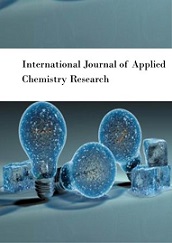Fotodegradasi dan Biodegradasi Chromophoric Dissolved Organic Matter (CDOM) di Pantai Lovina
Abstract
This study aimed at determining the effect of photodegradation on CDOM and nutrient alteration on Lovina Beach, especially in a tourism-dominated area. The subject of this study was seawater collected from Lovina Beach and filtered using GF/F 0.7 m with the help of a vacuum pump. The objects of this study were CDOM absorbance and nutrient concentration. Filtered seawater was placed into two containers: one was under sunlight for photodegradation, and the other was kept away from light for biodegradation. A water sample was collected every 2 hours for a total of 12 hours from both containers. Absorbance and nutrient concentration were measured using a UV-1800 Shimadzu UV-Vis Spectrophotometer. The absorbance spectral slope (S) and E2:E3 ratio were calculated from the absorbance.
The result shows the possibility of misinterpretation due to the use of S or E2:E3 alone to express photodegradation. Either one demonstrates that photodegradation seems to decompose CDOM less than biodegradation. However, if we notice its absorbance value, it is clear that the opposite phenomenon, which is reasonable, takes place. We, therefore, conclude that CDOM photodegradation cannot be concluded from S and E2:E3 alone, but its absorbance is also necessary to lead to the right interpretation. Beside CDOM absorbance, photodegradation also affects nutrients in the water. Photodegradation decomposes organic materials into inorganics, whereas organic nitrogen is turned into ammonia and is then oxidized into nitrite and nitrate via nitrification. Overall, photodegradation decreases the concentration of nutrients dissolved in water.







